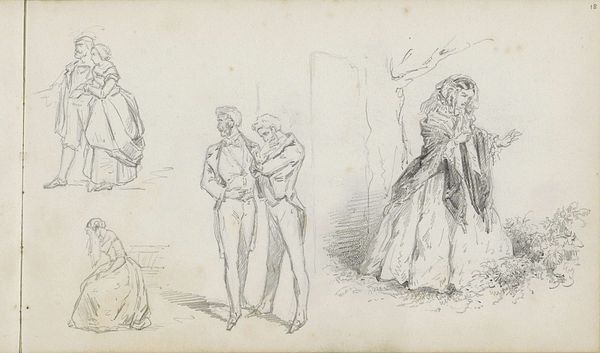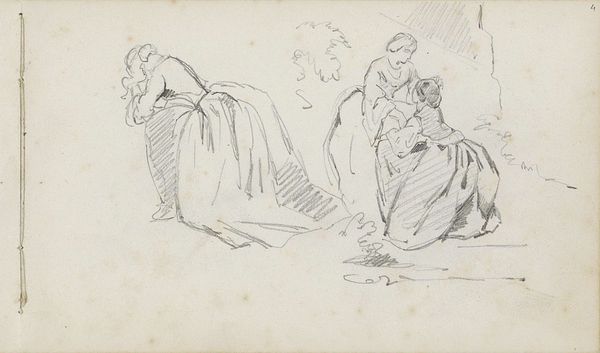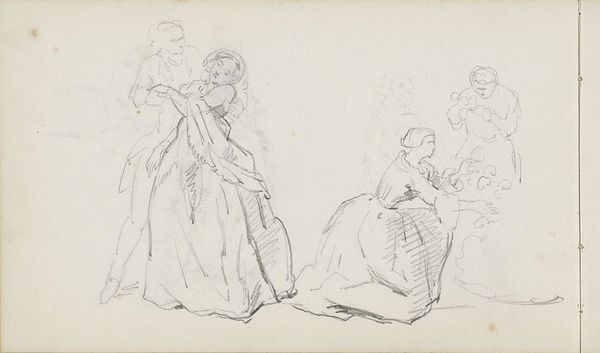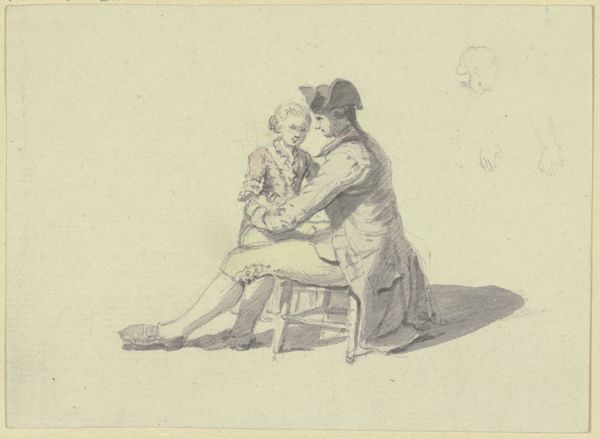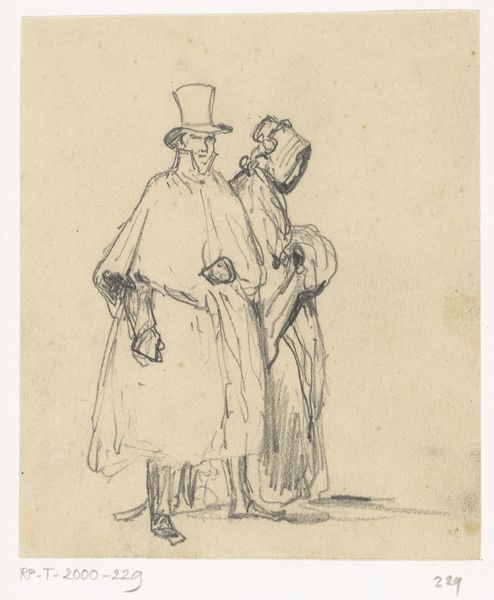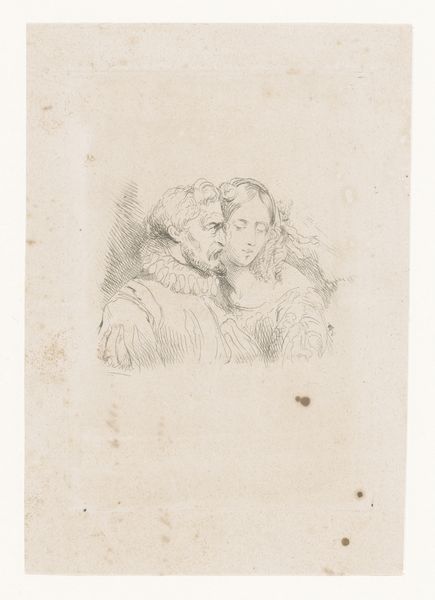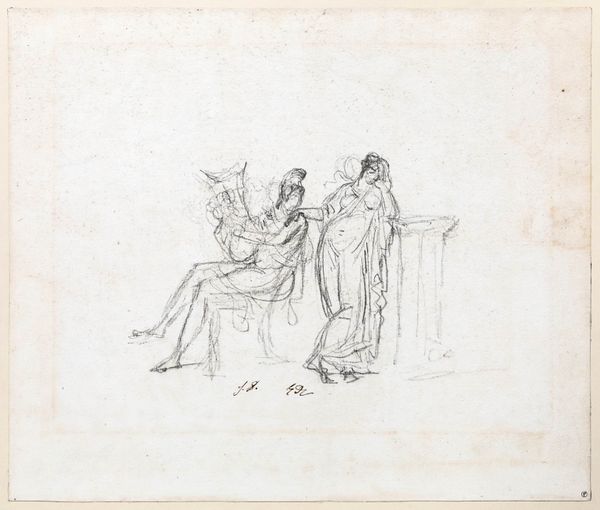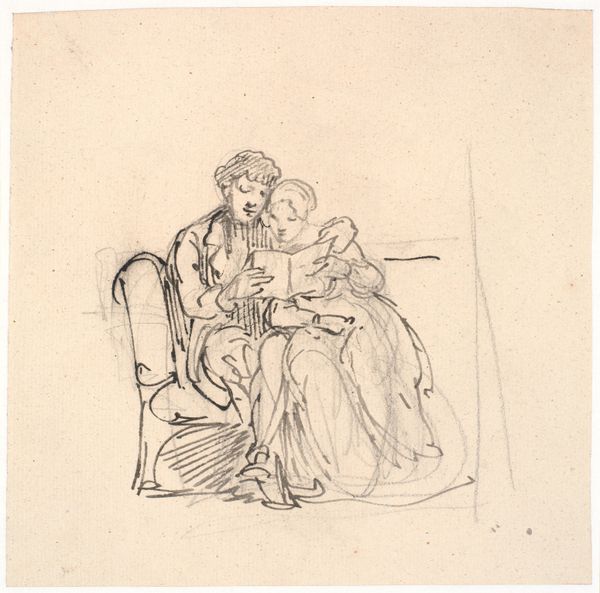
drawing, ink
#
drawing
#
narrative-art
#
figuration
#
ink
#
sketch
Dimensions: 21 x 32 cm
Copyright: Public domain
Curator: Oh, this hits you right in the gut, doesn't it? A swift little pang of what's being left behind. Editor: It does have a melancholy feel, a poignant farewell etched in swift strokes of ink. This is Alfred Dehodencq’s, "Study for the painting 'Departure of the Soldiers' (Central Group)", dating to 1870. We see his first thoughts on how to capture this specific grouping in the painting. Curator: Exactly! And those strokes...so urgent! You can almost feel the frantic energy, the pent-up emotion of that moment before separation. It's raw. What materials are used here? Editor: Dehodencq opted for ink in this preliminary sketch, very efficiently rendered as it highlights what matters to him compositionally, at the time. Sketches like these are crucial in art history to understand an artist's process and where they were at when creating the final artwork. I wonder, though, why emphasize the emotional connection when the large-scale painting speaks to nationalism? Curator: Hmm, interesting point. I guess it’s about seeing beyond the grand narrative, perhaps? Looking past the glory of war and zeroing in on the personal heartaches simmering beneath the surface. In my own work, I like to juxtapose macro historical concepts and events with singular accounts of those present. Here, that tension is built-in and perhaps it reveals Dehodencq's anti-war sensibilities. Editor: I concur; it's in that contrast between the hasty lines that sketch the scene's activity, and the implied sorrow, the anxiety. The fact it's unfinished perhaps intensifies the rawness, as you said. Like a half-remembered dream tinged with regret. The negative space leaves a void that pulls us into the composition. What will become of these figures in the narrative? And in terms of art and the way things were changing in Paris at the time... who is this art meant to move? Curator: A study isn’t supposed to have all the answers; it poses the question. To me, the unfinished quality makes the piece feel incredibly relatable and relevant now. The figures have almost universal feelings we can feel when encountering the work, more than a century later. Editor: Ultimately, Dehodencq gives us an honest moment—a whisper of grief and vulnerability amid what likely felt like overwhelming social pressures, expressed within the constraints of societal demands and expectations of war at the time. Curator: Exactly. And that’s what lingers, isn’t it? The small, human cost buried beneath the pomp and circumstance of "departure". Editor: Yes, and thinking about it, this poignant approach probably encouraged and spoke to Dehodencq's audience as it moved into the French collective memory.
Comments
No comments
Be the first to comment and join the conversation on the ultimate creative platform.


